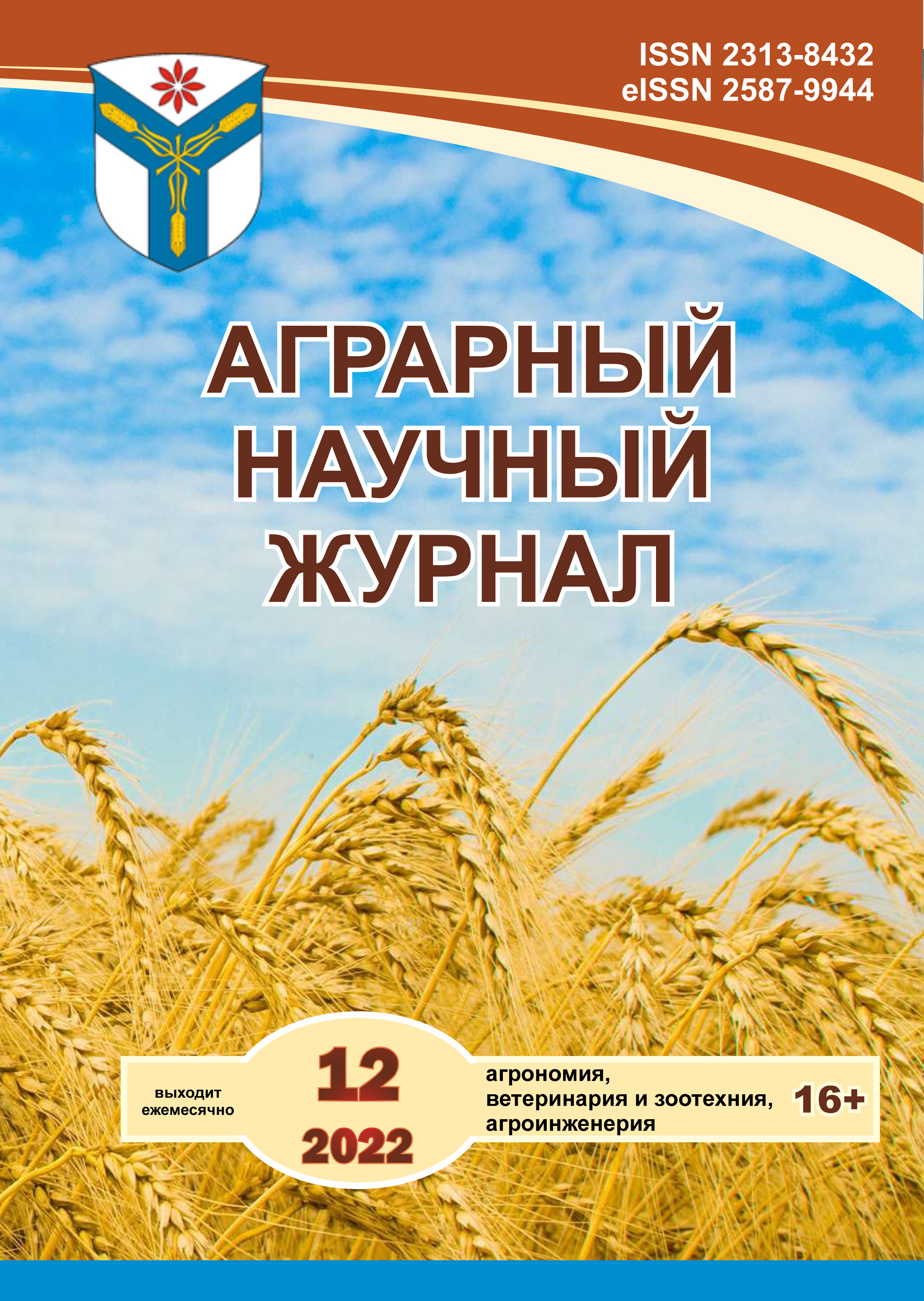The study of promising breeding potato hybrids for irrigated conditions of the steppe zone of the Orenburg region
DOI:
https://doi.org/10.28983/asj.y2022i12pp46-49Keywords:
hybrid, potatoes, productivity, marketability, pathogenAbstract
The study of the potential for the formation of yield and susceptibility to the main common pathogens in breeding potato hybrids was carried out on an irrigated plot of the KFH "Khomutsky V.I." Perevolotsky district of the Orenburg region in 2019-2022 The soil cover of the experimental plot is southern chernozem, medium-humus, medium-thick. The objects of the study were 8 breeding hybrids - 48.64.24 (M), 47.07-5 (M), 45.82-12 (M), 46.05.23 (M), 12.1-7 (M), M 11.58.3, M 11.64. 2, M 14.12.32 and standard grade Nevsky. Of the 8 hybrids studied over 3 years of testing, only 71 % form a yield higher than that of the standard variety, the remaining 29 % are significantly lower. During the same period, 50% of the studied hybrids were affected by common pathogens, potato tubers were affected by stolon rot in breeding hybrids: M 11.64.2 (8.3 %), common scab 47.07-5 (M) (11 %), 48.64-24 (M) (0,4 %), 45.82-12 (M) (25.7 %). As a result of the work, a promising potato breeding material for further work was identified, combining low damage with increased yields - 46.05-23 (47,2 t/ha) and 48.64-24 (41,8 t/ha).
Downloads
References
B?rtov? V., B?rta J., Jaro?ov? M. Antifungal and antimicrobial proteins and peptides of potato (Solanum tuberosum L.) tubers and their applications // Appl Microbiol. Biotechnol. 2019. Jul;103(14):5533–5547. DOI: 10.1007/s00253-019-09887-9. Epub 2019 May 29. PMID: 31144014.
FAO (2008) International Year of the Potato 2008, New Light on a Hidden Treasure. Food and Agriculture Organization of the United Nations, Rome. Режим доступа: http://fao.org›3/i0500e/i0500e00.htm.
Priou S., Jouan B. Mieux Comprendre la Pomme de Terre (eds Rousselle P., Robert Y., Crosnier J. C.). INRA Editions. Paris, 1996.
Mechanisms and recent advances in biological control mediated through the potato rhizosphere / S. Diallo et al. // FEMS microbiology ecology. 2011. No.75. P. 351–364.
Мушинский A. A., Аминова Е. B., Саудабаева А. Ж. Толерантность сортов картофеля к Streptomyces scabies и Fusarium oхysporum в орошаемых условиях Оренбургской области // Известия Самарской ГСХА. 2019. № 4. С. 8–12. DOI 10.12737/33172.
ГОСТ 29267-91. Картофель семенной. Оздоровленный исходный материал. Приемка и методы анализа. М.: Стандартинформ, 2010. 10 с.
ГОСТ Р 55329-2012. Картофель семенной. Приемка и методы анализа. М.: Стандартинформ, 2013. 11 с.
Методические указания по поддержанию и изучению мировой коллекции картофеля. СПб: ВИР, 2010. 28 с.
Методика исследований по культуре картофеля. М.: НИИКХ, 1967. 263 с.
Международный классификатор СЭВ видов картофеля секции Tuberarium (Dun.) Buk. рода Solanum L. Л.: ВИР, 1984. 43 с.
Методические указания по технологии селекционного процесса картофеля / П. П. Макаров [и др.]. М.: ВАСХНИЛ, 1980. 35 с.
Трускинов Э. В. Стратегия и тактика борьбы с вирусными болезнями растений на примере картофеля // Живые и биокосные системы. Научное электронное периодическое издание Южного федерального университета. 2014 № 9(4). Режим доступа: http://jbks.ru/archive/issue-9/article-4.
Fry W. E. Phytophthorainfestans: Newtools (andoldones) leadtonewunderstandingandprecisionmanagement // Annu. Rev. Phytopathol. 2016. No. 54. Р. 529–547. DOI: 10.1146/annurevphyto-080615-095951.
Karasev A. V., Gray S. M. Continuous and emerging challengesof Potato virus Y in potato // Annu. Rev. Phytopathol. 2013. No. 51. Р. 571–586. DOI 10.1146/annurev-phyto-082712-102332.
Downloads
Published
Issue
Section
License
Copyright (c) 2022 The Agrarian Scientific Journal

This work is licensed under a Creative Commons Attribution-NonCommercial-NoDerivatives 4.0 International License.








